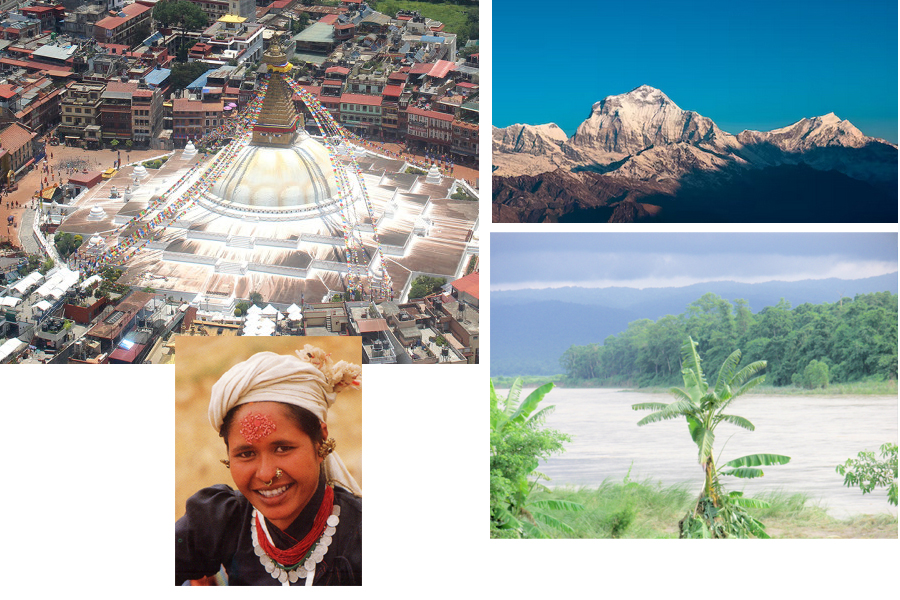
Pokhara, Nepal: In recent times, the Annapurna Conservation Area (ACAP) has experienced a remarkable resurgence in tourist numbers, reaching pre-Covid levels. ACAP information officer Ravin Kadaria reported that during the financial year 2079/080, the region welcomed 172,108 visitors, almost equaling the count of 183,357 tourists in 2075/076 before the pandemic struck. This revival signals a positive shift in the tourism industry after the setback caused by the global pandemic.
Annapurna Region Rebounding with 172,108 Tourist Arrivals:
The ACAP has witnessed a fluctuation in visitor numbers in recent years. In Nepal Fiscal Year 2076/077, the number of tourists dropped significantly to 104,165 due to the impact of Covid. As the world began to manage the pandemic better, tourist arrivals started to recover, with 4,916 visitors in 2077/078 and 75,824 in 2078/079. The financial year 2079/080 marked a turning point as 172,108 tourists explored the breathtaking beauty of the Annapurna region, reflecting the resilience of Nepal's tourism industry.
Tourist Data Collection Challenges in Gandaki Province:
Although ACAP has diligently maintained data on tourist numbers, collecting comprehensive information on tourist arrivals in Gandaki Province remains a challenge. Apart from ACAP and Pokhara Airport, no official records exist to track the number of tourists arriving in the province. Despite the province's plans for an international airport in Pokhara, data collection efforts have faced setbacks, hindering accurate information on annual tourist visits to Gandaki Province.
Tourism Infrastructure Investment in Pokhara:
With high hopes for an increase in tourist arrivals, Pokhara, the capital of Gandaki Province, has seen a surge in investments in tourism infrastructure. In the past five years, more than one billion rupees have been invested in hotels alone. Additionally, the hotel association in Pokhara has 425 affiliated hotels, while approximately 300 other hotels operate independently. Investments span across various sectors such as restaurants, adventure sports, paragliding, bungee jumping, zip-lining, ultralight flights, rafting, and kayaking. Despite these investments, the challenge lies in maximizing tourist stays and experiences.
Rafting in Sunkoshi River - A Thrilling Monsoon Adventure:
Among the world's best destinations for adventure rafting, the Bhotekoshi and Sunkoshi rivers in Sindhupalchok, Nepal, offer a thrilling experience for adrenaline enthusiasts. Even during the monsoon season, the rivers overflow with torrential rains, creating a murky and terrifying atmosphere. Surprisingly, the number of tourists seeking the thrill of rafting remains consistent during this season. Resorts and hotels along Sunkoshi Riverside known as "Sukute Beach" are adorned with colorful lights, welcoming over 300 domestic and foreign tourists daily for this adventure.
As the monsoon season envelops the region, locals are astonished to witness a consistent influx of tourists eager to engage in rafting adventures. Sunkoshi Bagarcheu bustles with activity, as resorts and hotels adorned with colorful electric lights welcome tourists with open arms. According to Narayan Shrestha, the general secretary of Nepal Association of Rafting Agencies (NARA) and a prominent figure in the tourism industry, the number of tourists flocking to resorts for rafting remains unchanged even during the winter months. Over 300 domestic and foreign tourists indulge in the thrill of rafting daily, keeping all resort hotels bustling with activity. Remarkably, an estimated 10,000 people partake in rafting excursions each month, showcasing the enduring allure of this adventurous pursuit. The allure of adventure rafting lies in its year-round availability, making it an enticing prospect for visitors even during the rainy season. While floods may pose a challenge, seasoned river guides ensure the safety of each rafting team, which typically consists of two kayaks, a river guide, and the enthusiastic tourists. The presence of skilled river guides is crucial, as they stand prepared to retrieve any bodies lost to the river's capricious waters. Previously, the Bhotekoshi and Sunkoshi rivers faced adversity due to reckless exploitation by sand smugglers and crushers, resulting in murky waters and altered river courses. However, the responsible management of Sunkoshi in recent times has allowed the river to regain its natural rhythm, contributing to its ever-increasing popularity among adventure seekers.
Beyond rafting, Sukute offers an array of thrilling activities, attracting tourists from Europe, America, and beyond. Tourists can indulge in mountain biking, bungee jumping, paragliding, cannoning, kayaking, cycling, jungle safaris, and even enjoy live concerts. For foreign tourists, rafting from Bahrbise to Dolalghat incurs an expenditure of approximately 75 US dollars. Notably, this year witnessed 25 foreign teams embarking on long-distance rafting adventures in Sunkoshi. For those seeking an extended 10-day rafting journey from Bahrbise to Dharan Barahkshetra, fees range from 1,500 to 7,000 dollars. Domestic tourists can enjoy short-distance rafting for a fee of 1,500 rupees, making it accessible to a broader audience. Beyond rafting, Sukute offers an array of thrilling activities, attracting tourists from Europe, America, and beyond. Tourists can indulge in mountain biking, bungee jumping, paragliding, cannoning, kayaking, cycling, jungle safaris, and even enjoy live concerts. For foreign tourists, rafting from Bahrbise to Dolalghat incurs an expenditure of approximately 75 US dollars. Notably, this year witnessed 25 foreign teams embarking on long-distance rafting adventures in Sunkoshi. For those seeking an extended 10-day rafting journey from Bahrbise to Dharan Barahkshetra, fees range from 1,500 to 7,000 dollars. Domestic tourists can enjoy short-distance rafting for a fee of 1,500 rupees, making it accessible to a broader audience.
As the tourism industry in Nepal rises from the impact of the Covid pandemic, the Annapurna Conservation Area has witnessed a remarkable rebound in tourist numbers. The proactive investments in tourism infrastructure in Pokhara provide hope for the future of the industry in the region. Additionally, the thriving adventure rafting scene on the Bhotekoshi and Sunkoshi rivers during the monsoon season showcases Nepal's ability to attract thrill-seekers from around the world. As Nepal continues to offer unique and memorable experiences, the country's allure as a top tourist destination remains steadfast.